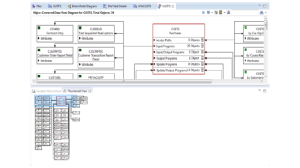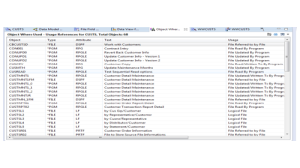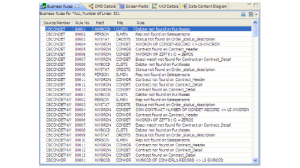
Since joining Fresche’s Pre-Sales team, I have worked with several IBM i clients looking to improve their IT infrastructure. Whether they wanted to consolidate, modernize or simply understand their IT, all were looking to ultimately improve their business.
I have seen organizations make incredible productivity gains by addressing their challenges in innovative ways – and that’s certainly a good thing. As companies look to stay up to date with the latest technologies and remain competitive in their industries, IT is under more pressure than ever to respond to the needs of their business with innovation, increased efficiency and perhaps even new development. This means that IT staff increasingly needs to focus their efforts on improving IT, rather than simply maintaining it.
Here is my list of the top 5 IT tasks that bog developers down, and how to fix them by leveraging the power of automation.
1. Manually Drawing Flow Charts
It is imperative that IT decision-makers have a strong understanding of how applications work together in everyday processes. Workflows should be clearly defined, with all steps laid out visually and interactions clearly mapped. Without a strong understanding of how IT processes rely on various applications, and how data is transferred throughout systems, it is much harder to make changes and determine where improvements can be made.
Unfortunately, the task of documenting workflows manually is a complicated and time-consuming one. Many companies have systems that are so expansive, and perhaps, so old, that they simply don’t know how their current processes are mapped across their applications.

X-Analysis’ Flow Chart Generation feature automates this documentation process by generating visual flow charts that document IT processes in visual workflows. This automated feature delivers valuable insight into how various applications are implicated in every day processes and provides a decision-makers with the knowledge they need to move forward with changes.

2. Manually Creating Conceptual & Technical Design Documents
In the same way that manually documenting workflows is a complex and convoluted process, so is documenting applications themselves. Not only is this manual process time-consuming, it is also highly vulnerable to human error, and thus, risky. Documenting code, however, remains vitally important. Without strong documentation, it’s difficult to understand exactly how applications work, extrapolate data, make changes and, of course, onboard new employees. Even experienced staff can struggle to understand their applications without access to clear documentation.
The X-Analysis Document feature automatically documents applications and produces content that details code line by line. It grants developers a much higher level of certainty, and peace of mind for those looking to understand and augment their code.

3. Scanning Source Code using STRPDM – one member at a time to research ‘where used’ variables, files, etc.
Knowing how code changes are going to affect your applications is extremely important. Too often, developers find themselves playing guessing games, modifying one line and crossing their fingers that nothing else will break. This leads to a game of whac-a-mole, where developers must go through a tedious process of trial and error to arrive at their desired outcome. Like documentation, the manual process of determining “where used” variables is lengthy and hard to get right.
Fortunately, there is a way to automatically determine the source code of application functions, and conduct reliable impact analysis. The X-Analysis Where Used function allows developers to make code changes with confidence that they wont break anything else.

4. Systems Performance & Cleanup – Researching missing source, objects, and un-executable code
Understanding where the bulk of your processes are happening in your applications is critical to strategically plan for the future of your IT. Too many organizations don’t understand where their most crucial processes are happening and how their data is being processed. They also can’t measure the quality of their code and whether their data metrics meet modern IT standards.
The X-Audit feature of X-Analysis provides valuable insight into what code is being used, what code is obsolete, what needs improvement and where there are duplicates. The feature provides a concrete understanding of where to start system improvements by determining vulnerabilities and zeroing in problem areas.
5. Scanning RPG Code for ‘hard coded’ values one member at a time (i.e. Contract Number <> 300000)
Many IBM i organizations feel they are the mercy of their applications because they simply don’t understand and can’t change the business logic that determine how they work. This becomes especially cumbersome for organizations trying to implement new policies or do away with old ones. Understanding the business rules that are hard-coded into applications is critical. Like the other items on this list, the manual process of determining business rules is a laborious one that requires a great deal of trial and error.

The business rules feature of X-Analysis scans an applications RPG for its hard -coded values, and lets users see the business logic guiding their application functions.


